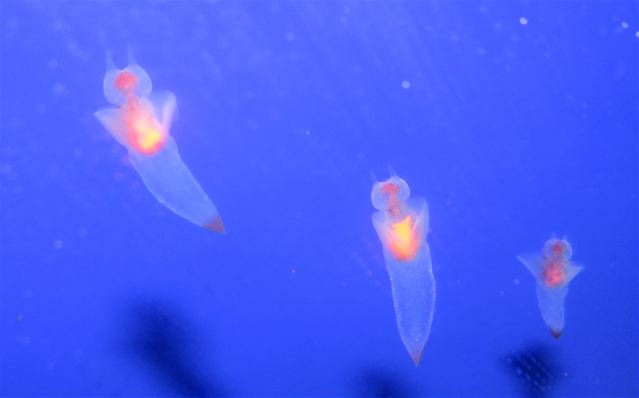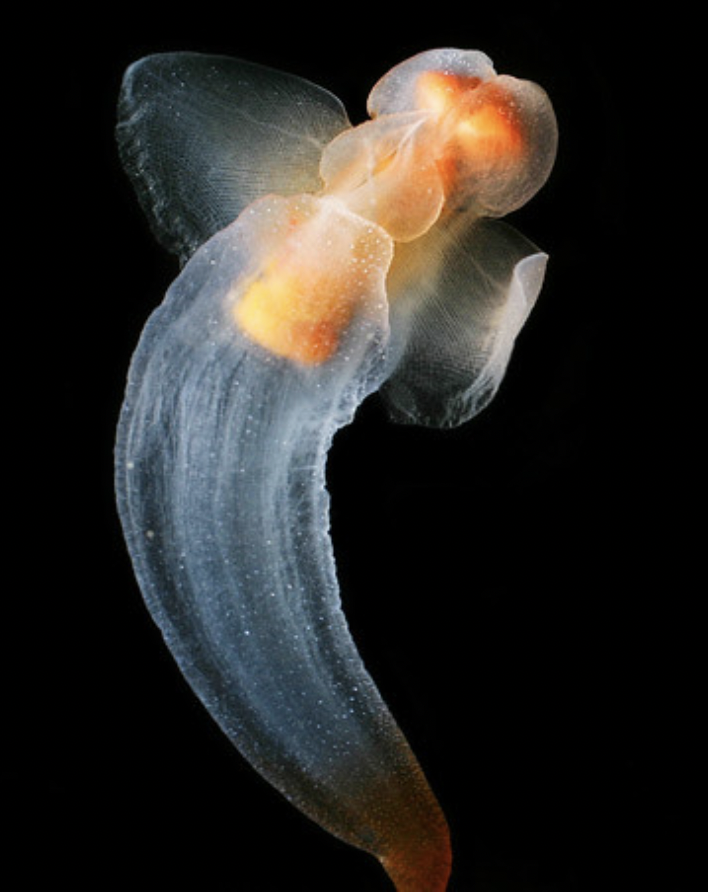The Truth About Sea Angels
Don't let these creatures' angelic looks fool you

Sailors have long reported sights of heavenly creatures swimming just below the water’s surface. They might not have been able to catch glimpses while peering over the rails of their ship, but they were right about one thing: there are sea angels lurking in the oceans.
Sea angels are in the clade Gymnosomata and are teeny tiny sea slugs that can measure up to only seven centimeters in length at most. They get their name from their wing-like appendages which help them glide around their ocean home.
Sea angels are truly captivating to watch. Part of their overall allure can be attributed to the way they move. These creatures glide through the ocean in pulsing motions as graceful as a choreographed dance. The other thing that makes them so mesmerizing to watch is the fact that these animals are semi-transparent. Just by looking at them, you can see their internal organs and gonads! You don’t need a magic school bus to look deeper into a sea angel’s inner workings. You can see right through these incredible creatures and visualize what makes them tick.
There is a long list of things that make sea angels amazing. They are hermaphrodites, meaning they can switch sexes. Their mating rituals look a lot like a dance—which is every middle school dance chaperone’s worst nightmare—but it’s actually quite lovely to watch. A sea angel couple stays locked together during these rituals, spinning for hours while listening to the symphony of the ocean’s depths.
Sea angels live a truly shell-tered life. They are born with shells, but they lose them as they grow into adulthood. Once they mature and transition to their adult form, they transform like a caterpillar turns into a butterfly. But don’t confuse them with sea butterflies. Those ocean flutterers, though they are in fact fellow pteropods, are no friend to sea angels—they are their lunch!
Yes, I did just lure you into a false sense of security about sea angels. Here’s the turn in the story, the moment the scary music begins to play and we descend into the deep dark secrets of these beautiful sea angels.
You see, sea angels are actually carnivorous, and they feed exclusively on the equally adorable-looking sea butterflies. Just like horror movie villains, different sea angels have different strategies when it comes to killing their prey. Some like to wait for the perfect moment to ambush; others actively hunt down poor sea butterflies before they eat them. Incredibly, sea angels move twice as fast as their prey, making it easy for them to move in for the kill.
Once they catch their unfortunate meal, the real horror show begins. Sea angels open their mouths and roll out special tentacle-like appendages known as buccal cones. Unlike sea angels, sea butterflies don’t lose their shells. Thus, these buccal cones have numerous hooks and teeth-like radula that allow them to scoop the sea butterfly out of a shell and into its gullet. 
Take a moment to picture this with me. Imagine you’re about to be killed by a ruthless murderer in a horror movie, which is obviously bad enough. This murderer also has transparent skin, so you can literally see its heart beating as it goes in for the kill (yep, even scarier). Then, they take off their mask to reveal a bunch of flailing tentacles with sharp edges designed to scoop out your gooey bits like an avocado from its shell. Yes, we agree: it’s truly terrifying.
Oh … and remember that bit about sea angels’ beautiful mating dance? Well, I did leave a pretty important part out in my description. When mating sea angels get close to a mate, they actually turn their reproductive organs inside out. These critters have special suction cups that hold them together, leaving them literally scarred from the entire experience. Oh, and sometimes they will hunt at the same time as mating. Double the terrifying horror creature murdering you with razor tentacles, double the … fun?
Like every good supervillain, sea angels also make it quite difficult to be killed. Some species produce a chemical defense to deter fish from eating them. This trait has even earned them a henchman! The partners in crime—little crustaceans called amphipods—will attach themselves to these sea angels to take advantage of their superior defenses.
And of course, deep down, every good horror movie contains a lesson in survival. Sea angels are no different. These animals and their prey date back to about 130 million years ago in the Cretaceous period. That means they’ve already survived a mass extinction event and scientists are studying them to see if they have lessons to teach us about resilience as well.
While their behavior might be terrifying, they have reason to be afraid of us as well. Human-induced ocean acidification is directly threatening sea butterflies, which means sea angels are quite literally losing their lunch. The shell of a sea butterfly is very thin, which means it can be dissolved in overly acidic seawater. The good news? You can take action on ocean acidification today to keep sea butterflies and the terrifying and wonderful sea angels alive and healthy for millions of years to come. Don’t wait: take action today for these jaw-dropping creatures.